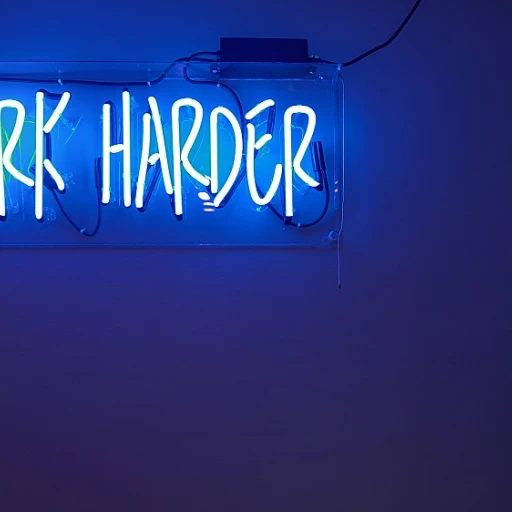Understanding Change Management Frameworks
Decoding Change Management Frameworks for Business Evolution
In exploring the success of organizational change, understanding change management frameworks becomes crucial. These frameworks are essential tools for guiding businesses through transformations, ensuring a smooth transition for both the organization and its employees. Various models like the ADKAR model, Lewin's Change Model, and the Change Curve offer methodologies to manage adjustments effectively.
Each change model provides unique strategies for implementing change, addressing crucial aspects like managing employee resistance, envisioning future states, and aligning organizational processes. For instance, Lewin's theory focuses on unfreezing current behaviors, transitioning to new practices, and refreezing to establish stability. In contrast, Nudge Theory emphasizes gradual behavioral changes to overcome the status quo bias.
Frameworks like these are not only tools for managers but also support for employees, facilitating a smoother transition by reducing uncertainty and building confidence in the process. Adopting the right management framework can determine the success of change initiatives, improve employee acceptance, and align changes with the organization's strategic vision.
It's important to note how organizational change impacts onboarding strategies. Effective frameworks can enhance the onboarding process by incorporating change management principles, ensuring new hires are aligned with the company's evolving goals. In subsequent sections, we'll delve into key elements and common challenges in onboarding and how to integrate these change models for better outcomes.
Key Elements of Successful Onboarding
The Pillars of Effective Onboarding
For organizations embarking on onboarding initiatives, understanding the key components that lead to success is crucial. These elements turn a simple introduction into a meaningful and effective experience for new employees, paving the way for successful organizational change and integration. Below are some foundational aspects to consider.
- Clear Objectives and Outcomes: Before any onboarding process begins, it is important for businesses to define what they aim to achieve. A well-outlined plan ensures that both the organization and the employees have a shared understanding of the outcomes, reducing resistance change and aligning with organizational goals.
- Structured Frameworks and Stages: Utilizing management models, such as the ADKAR model or Lewin's change management theory, provides a scaffold for new hires to understand their role within the broader company structure. These models can act as a guiding theory for effective onboarding and organizational change.
- Personalization and Adaptation: While models and frameworks provide structure, they must also accommodate personalization. Recognizing that employees have individual ways of adapting to change helps tailor the onboarding experience to better fit different work styles and needs, enhancing both satisfaction and productivity.
- Engagement and Interaction: Companies are increasingly using nudge theory to foster active participation in onboarding programs. Creating opportunities for strong interpersonal interactions helps employees feel a sense of belonging and reduces the fear of the unknown, which is critical in managing change effectively.
- Feedback and Continuous Improvement: Effective onboarding is not static. Managers should collect feedback throughout the onboarding journey, allowing for adjustments in real time. By implementing change based on direct feedback, organizations can iteratively improve the process.
Incorporating these elements into an onboarding strategy not only reinforces existing business processes but also supports broader change initiatives. Companies that successfully integrate these components typically witness increased employee retention and organization-wide benefits.
For more insights on optimizing the onboarding experience, you can explore this resources that delve deeper into customer success and onboarding.
Common Challenges in Onboarding
Overcoming Roadblocks During Onboarding
The onboarding process is crucial to an organization's success, yet it's not without its obstacles. Many organizations face challenges that can hinder a smooth transition for new employees. These barriers often arise from resistance to change, ineffective communication, or inadequate resource allocation.
Resistance to change is a natural human behavior, yet it can pose significant challenges during onboarding. Organizations relying on traditional models, like the status quo, may find it difficult to adapt to new processes. This resistance often stems from a lack of understanding or fear of the unknown. Implementing effective strategies to address these fears can help ease the transition.
Ineffective communication is another common stumbling block. Communication breakdowns can occur when there is no clear plan or framework in place to guide the onboarding process. Models such as the Lewin Change model and the ADKAR model provide structures that facilitate transparent and open communication, enabling employees to better understand their roles and responsibilities within the organization.
Moreover, inadequate resource allocation can impede the effective management of onboarding. Without the necessary tools, managers can struggle to provide new hires with the support they need. Organizational change management models, like the Bridges Transition model, emphasize the importance of resource planning to ensure the smooth integration of new employees. By exploring these management frameworks, companies can better allocate resources to support successful onboarding.
Understanding these common challenges and integrating proven change management models can facilitate a more effective onboarding process for organizations. Addressing resistance, enhancing communication, and ensuring adequate resources can pave the way for a successful onboarding experience, ultimately benefiting both employees and the organization.
Integrating Change Management into Onboarding
Seamless Integration of Change Management in Onboarding
Incorporating change management principles into the onboarding process is crucial for fostering a cohesive and welcoming environment for new employees. To effectively implement change, organizations need to understand the various components of change models and frameworks. This enables them to tailor strategies that meet both organizational objectives and the needs of individuals undergoing transitions.
One key aspect of this integration is adopting a holistic approach, which involves aligning existing organizational change initiatives with the onboarding process. For instance, the ADKAR model, a popular change management model, emphasizes awareness, desire, knowledge, ability, and reinforcement. By aligning onboarding with these elements, organizations can ensure new employees not only understand organizational changes but also feel empowered to embrace them.
Organizations can employ other theories, such as the Lewin Change model and Bridges' Transition model, to facilitate smooth transitions. The Lewin Change model's phase of "unfreezing" helps prepare employees for change by creating awareness and reducing resistance. Similarly, Bridges' Transition model focuses on the psychological aspects of transition, aiding new employees through the emotional journey from their old status quo to their new roles.
Employing these strategies effectively requires organizational leaders and managers to act as change champions. This involves clear communication, providing a supportive network, and offering resources that help employees adjust to changes. When organizations prioritize change management within the onboarding process, it not only benefits the business but also enhances the overall employee experience, leading to increased job satisfaction and retention rates.
Integrating change management into onboarding is not a one-size-fits-all process. Organizations should continuously evaluate and refine their strategies to adapt to evolving needs, aiming for a dynamic and responsive onboarding framework that supports both organizational and employee growth.
Case Studies of Successful Onboarding
Unveiling Successful Examples in the Realm of Onboarding
Delving into various organizations and their onboarding journeys can provide insightful lessons on how effectively integrating change management frameworks can lead to successful outcomes. By examining real-world implementations, companies can understand how to best adapt these frameworks to their unique environments.
Organizations that have effectively embraced change often adopt a holistic approach, using well-established models like the ADKAR model or Lewin's Change Management Theory. These models help guide the process, ensuring each step is tailored to meet organizational needs and manage the transition smoothly. Such frameworks naturally lead to less resistance and a more coherent transition for employees.
One example of successful onboarding is a global tech company that utilized the Bridges Transition Model to emphasize the human side of change. This organization acknowledged that employees naturally resist changes to their status quo and designed programs that focused on easing the psychological transition. Consequently, this resulted in a workplace where employees felt supported and engaged from the onset.
Another standout example comes from a financial institution implementing the Nudge Theory. They focused on small, incremental changes that aligned with bigger organizational goals and leveraged peer influence to foster a culture of continuous improvement. The result was a more nimble workforce ready to adapt to changes in a highly dynamic industry.
These case studies underscore the importance of a strategic plan that recognizes the psychological aspects of change as integral to onboarding success. While each organization has its unique set of challenges, the integration of suitable management theory and practices can substantially improve the onboarding experience, making the transition less formidable and more fruitful for everyone involved.
Future Trends in Onboarding and Change Management
Innovative Directions in Onboarding and Change Management
As organizations strive to stay ahead in an ever-evolving business landscape, understanding future trends in onboarding and change management becomes crucial. The integration of change models and organizational frameworks is no longer a choice but a necessity for successful adaptation.
The increasing complexity of organizational change demands more robust management models. The ADKAR model, which emphasizes awareness, desire, knowledge, ability, and reinforcement, is highly valued for its practical application in facilitating change. Similarly, Lewin's change model, with its unfreeze-change-refreeze stages, serves as a foundational approach for many businesses looking to implement change effectively.
Moreover, the rise of personalized onboarding experiences aligns with the shift towards employee-centric models. Organizations are adopting strategies that recognize the unique needs and preferences of individual employees, ensuring a smoother transition into their new roles and reducing resistance to change.
Adapting the Kubler-Ross change curve and Bridges transition model, companies aim to better understand the emotional and psychological journey of employees during times of change. Such insights allow managers to plan interventions that minimize disruption and foster resilience.
Additionally, the role of technology cannot be overlooked in shaping the future of onboarding and change management. From digital platforms that support remote onboarding processes to advanced analytics that track employee engagement and performance, technology continues to redefine how organizations manage change initiatives.
The push towards organizational agility will further influence the management frameworks employed by companies. This shift entails being responsive and adaptable, with flexible structures that allow for quick adjustments in response to changes in the business environment.
In conclusion, the future of onboarding and change management will be defined by the effective integration of proven models and innovative practices. Organizations must remain open to revisiting and refining their frameworks to ensure continued success in an ever-changing world.













